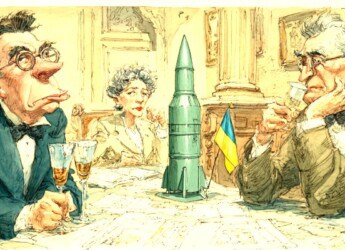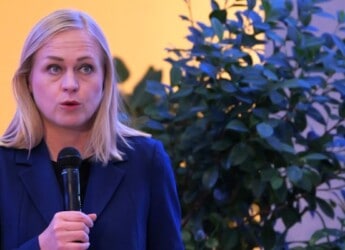Editor’s Note: ComplexDiscovery OÜ has been committed to covering the Russo-Ukrainian War since its inception, providing readers with timely updates grounded in detailed and documented reporting from the Institute for the Study of War (ISW). Our analysis focuses on delivering factual, data-driven insights to help readers navigate the complexities of both information and misinformation surrounding this conflict. Today’s coverage offers a narrative presentation of a recent Ukraine Fact Sheet released by the ISW. This summary highlights key data points that shed light on the state of the war, the resilience of the Ukrainian defense, and the realities behind much of the recent reporting. As always, our goal is to offer clarity and context in the face of evolving developments and contested narratives.
For those seeking to grasp the full scope of this evolving landscape, the complete updates from the Institute for the Study of War serve as an invaluable resource.
Content Assessment: Debunking the Myths: What a Recent ISW Report Reveals About Ukraine’s War Effort
Information - 94%
Insight - 95%
Relevance - 92%
Objectivity - 95%
Authority - 96%
94%
Excellent
A short percentage-based assessment of the qualitative benefit expressed as a percentage of positive reception of the recent article from ComplexDiscovery OÜ titled, "Debunking the Myths: What a Recent ISW Report Reveals About Ukraine’s War Effort."
Background Note: ComplexDiscovery’s staff offers distinctive perspectives on the Russo-Ukrainian war and Middle Eastern conflicts, informed by military experience on the West German, East German, and Czechoslovakian border during the Cold War and in Sinai as part of Camp David Accord compliance activities. This firsthand regional knowledge has been further enhanced by recent staff travels to Eastern European countries, including Estonia, Finland, Latvia, Lithuania, and Poland. These visits have provided up-to-date, on-the-ground insights into the current geopolitical climate in regions directly impacted by the ongoing conflict.
Combined with cybersecurity, information governance, and eDiscovery proficiency, this multifaceted experience enables comprehensive analysis of these conflicts, including the critical impact of cyber warfare, disinformation, and digital forensics on modern military engagements. This unique background positions ComplexDiscovery to provide valuable insights for conflict-related investigations and litigation, where understanding the interplay of technology, data, and geopolitical factors is crucial.
Russo-Ukrainian Conflict Update*
Debunking the Myths: What a Recent ISW Report Reveals About Ukraine’s War Effort
ComplexDiscovery Staff
In the heart of Eastern Europe, as the war in Ukraine pushes into its third year, the tides of battle reveal a sobering truth: Russia’s grand designs for domination are faltering against the unyielding defense of a nation determined to survive. The frontlines stretch across vast territories, yet the reality for Moscow is grim—its forces occupy only about 20 percent of Ukraine, while the remaining 80 percent continues to resist, governed by Kyiv’s steadfast leadership and bolstered by international alliances.
Despite relentless bombardments and ceaseless offensives, Russia’s advance has slowed to a crawl. The statistics tell their own story: what was once a rapid surge through Ukrainian territory has dwindled to mere increments of captured land, shrinking from nearly 28 square kilometers a day in late 2024 to just over 16 square kilometers daily by the start of 2025. At this rate, even with an impossible assumption that Russia could maintain its current pace indefinitely, it would take over eight decades for the Kremlin to seize the rest of Ukraine. The futility of this ambition underscores the strategic miscalculations haunting Russia’s leadership.
Far from the popular narrative of devastation, Ukraine’s major cities—Kyiv, Lviv, Dnipro, and Odesa—remain functional, defying predictions of total destruction. While cities like Mariupol stand as tragic reminders of Russia’s ruthlessness, these urban strongholds are symbols of endurance. They continue to operate under the strain of war, their resilience highlighting not only Ukraine’s strategic defense but also the failure of Moscow’s attempts to break the country’s spirit through mass destruction.
Meanwhile, within Ukraine’s government, the realities of wartime law are shaping the political landscape. Unlike in some Western democracies, Ukraine’s constitution forbids elections during martial law—an essential safeguard activated by Russia’s invasion. Even opposition politicians, many of whom have historically challenged President Zelensky, have agreed that holding elections under such circumstances would violate both the law and moral integrity. This suspension of elections is not an erosion of democracy but a reflection of Ukraine’s unwavering commitment to legal norms, even amidst existential threats.
As the war drags on, the costs remain staggering but far from the exaggerated estimates often echoed in misinformation campaigns. Ukraine has suffered immensely, with tens of thousands of soldiers lost in battle and hundreds of thousands more wounded. Yet the oft-cited claim of “millions” of casualties is baseless. Verified reports suggest that civilian deaths have surpassed 12,000—an appalling toll, but one that pales in comparison to the catastrophic figures sometimes propagated by false narratives.
Amid these challenges, Ukraine’s lifeline remains the robust support of its international allies. While much attention has been paid to the aid flowing from the United States, Europe’s role has become equally pivotal. Collectively, the European Union, Norway, and the United Kingdom have pledged over $204 billion in support, surpassing America’s contribution of $183 billion. This aid—delivered through a combination of direct funding and loans backed by revenues from frozen Russian assets—underscores the global consensus against Russia’s aggression.
Contrary to claims of corruption or mismanagement, the majority of U.S. aid remains within American borders, funding the replenishment of U.S. stockpiles and boosting the domestic defense industry. Oversight bodies, including the U.S. Department of Defense’s Office of the Inspector General, have found no evidence of misuse or misappropriation, challenging narratives that seek to undermine continued assistance to Kyiv.
Perhaps the most tragic dimension of this war lies in the missed opportunities for peace. In early 2022, before Russia’s full-scale invasion, President Zelensky extended multiple invitations for direct negotiations with Vladimir Putin, even offering to discuss sensitive issues like Ukraine’s potential NATO membership. Moscow’s response was stark and uncompromising—complete surrender and demilitarization. Every opportunity for meaningful dialogue was met with ultimatums, setting the stage for a brutal and avoidable conflict.
Now, as Russian forces bleed resources and manpower in pursuit of diminishing territorial gains, the broader question looms: How long can Russia sustain its failing offensive strategy? And, perhaps more critically, will the global coalition supporting Ukraine maintain its resolve in the face of prolonged war?
The story of Ukraine’s defense is no longer just about a nation’s survival—it is about defiance in the face of overwhelming odds, a testament to resilience that continues to inspire a watching world.
News Source
Institute for the Study of War. (2025, February 21). Ukraine Fact Sheet. Retrieved from https://www.understandingwar.org/backgrounder/ukraine-fact-sheet-february-21-2025.
As a leading source for cybersecurity, information governance, and legal discovery insights, including international investigations and litigation, ComplexDiscovery OÜ recognizes the importance of awareness regarding alleged and documented criminal acts, particularly in the context of the Russia-Ukraine conflict. While we, following the lead of the Institute for the Study of War (ISW), do not provide detailed coverage of war crimes in our primary reports, we encourage professionals within the eDiscovery ecosystem to stay informed about these activities. This awareness is crucial for understanding potential future legal actions and responsibilities.
About the Institute for the Study of War Research Methodology
ISW’s research methodology relies on both primary and secondary sources, enabling researchers to develop a comprehensive understanding of the situation on the ground. In order to analyze military and political developments in any given area, ISW’s research analysts must wholly understand the systems of enemy and friendly forces. They must also understand the population demographics, physical terrain, politics, and history of that area. This lays the analytical foundation for understanding the reasons for particular developments and fulfilling their assigned research objectives. ISW analysts also spend time in places like Iraq, Afghanistan, and elsewhere in order to gain a better understanding of the security and political situation and to evaluate the implementation of current strategies and policies. Our researchers compile data and analyze trends, producing a granular analysis of developments in areas of research, producing an accurate, high-resolution, timely, and thorough picture of the situation. ISW’s research methodology guarantees its success and commitment to improving the nation’s ability to execute military operations, achieve strategic objectives, and respond to emerging problems that may require the use of American military power.
About the Institute for the Study of War
The Institute for the Study of War advances an informed understanding of military affairs through reliable research, trusted analysis, and innovative education. They are committed to improving the nation’s ability to execute military operations and respond to emerging threats in order to achieve U.S. strategic objectives. ISW is a non-partisan, non-profit, public policy research organization.
Learn more, get involved, and contribute today.
Additional Reading
- From Dissent to OSINT? Understanding, Influencing, and Protecting Roles, Reputation, and Revenue
- [Annual Update] International Cyber Law in Practice: Interactive Toolkit
- Data Embassies: Sovereignty, Security, and Continuity for Nation-States
Assisted by GAI and LLM Technologies
* Sourced and shared with direct expressed permission from the Institute for the Study of War (ISW). Content may be augmented with relevant news updates on strategic and diplomatic developments.
Source: ComplexDiscovery OÜ



























